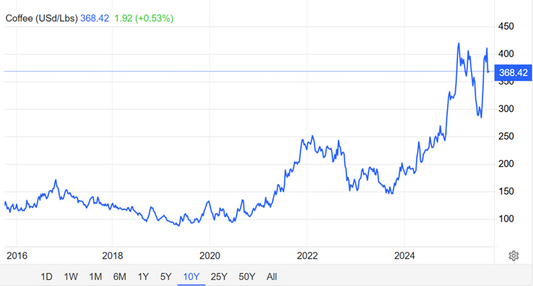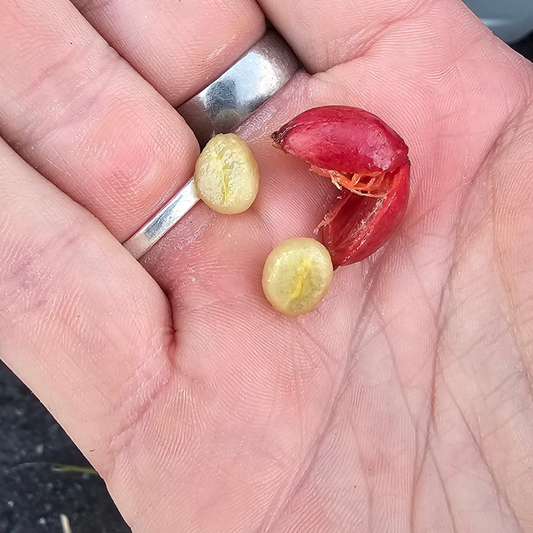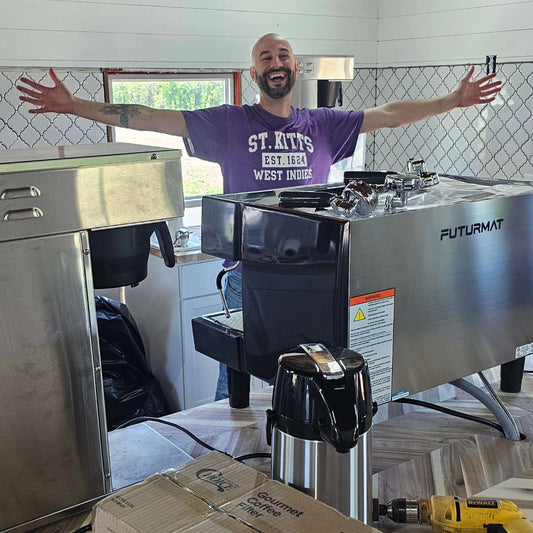If you’re anything like me, and you’ve been watching all these amazing videos on social media of people brewing Creamy, Rich shots of Espresso that look like caramel… and you want to try it for yourself, but then you start browsing for Home Espresso Machines online and see the price tags starting at $1,500-$3,000+!
Yes, it’s expensive, but the precision brewing built into these machines is what you need to pull espresso like the pros.
Luckily, there’s a few cost-effective options you can start with to see what all the fuss is about. I’m talking as simple as $60-$100 for Barista Quality Coffee brewing, and around $300 if you want to make espresso.
The Pour Over ($60)
This is the most classic and effective method for brewing Barista Quality black coffee from home (in my opinion). It’s different from a traditional drip brewer because it gives you complete control over the speed of your pour, the temperature of your water, and the ratio of your coffee to water. This makes all the difference.
All you need is a Chemex style Pour Over system, coffee filters, a gooseneck kettle, and a burr coffee grinder (optional – since you can also order pre-ground coffee.)


The key components to getting this right are the coffee to water ratio, coffee grind settings, water temperature, and your pouring speed.
-
Add Ground Coffee to the Chemex Filter
- Use a 5% Coffee to water ratio for the best effect (1oz Coffee per 20oz water) etc…
- Heat water in a gooseneck kettle to 205 degrees Fahrenheit.
-
Pour heated water through Chemex filter in two cycles:
- First pour should fully soak coffee grinds in the filter, let the coffee bloom and the water fully pass through before the second pour.
- Finish the remainder of your water in the second pour.
-
Adjust Grind settings to flavor.
- Coarser Grind = Weaker brew
- Finer Grind = Stronger Brew
Try brewing our Ethiopian coffee using this method, drink it black, and tell me this isn’t one of the most unique and flavorful brews you’ve ever had. It certainly is that way for me, and I’ve been eating coffee beans since I was 5 years old!
The Manual Espresso Machine ($300)
Search for the Flair Espresso Maker, this is what you want. Don’t waste your money on a cheap espresso machine because it’s not going to produce you espresso the way it’s meant to be prepared. Cheap automatic espresso machines lack water temperature consistency, pressure consistency, and for some ridiculously annoying reason they always seem to only support a portafilter basket that’s designed for a toddler (it’s tiny – half a shot per brew at best).

The downside of the Manual Flair Espresso Machine is that it’s fully manual (obviously, lol) the brewing pressure can fluctuate (but you can overcome this with practice and skill), and the water temperature is less consistent than the more expensive automatic machines because it’s not managed by a boiler and temperature control system. However, for $300, this is going to get you very close to those beautiful espresso shots you see us coffee nerds pouring on social media. Flair makes two similar units, make sure to get the one with a pressure gauge – it’s worth the extra $50.
I’m not going to get deep into brewing methods for this, but I’ll give a few pointers that can get you started:
- Use a burr grinder for consistency (Manual Burr Grinders run around $80 on Amazon). Or you can order pre-ground espresso (Make sure it’s specifically an espresso grind – regular drip grinds will not give you the desired result).
- When brewing, try to keep the pressure gauge around 9 bars throughout the whole brew.
- Use roughly half an ounce of coffee per double shot of espresso (Double shot means you’re going to brew 2 ounces of espresso).
- Don’t pour your hot water into the reservoir until right before you’re ready to brew (you want the water temp to be as close to 205 degrees as possible throughout the whole shot.
If you want to taste espresso like how it’s brewed in a coffee shop, for an affordable price, this is the way to do it.
If you enjoyed the guide – please signup for our newsletter! There’s plenty more brew methods to choose from, but these will get you on the right foot in the specialty coffee world!
Enjoy the coffee, folks!
-Nicolas M. Co-Founder, Foxen Coffee.





1 comment
What s cool lever machine. Right now pour over had been my favorite.